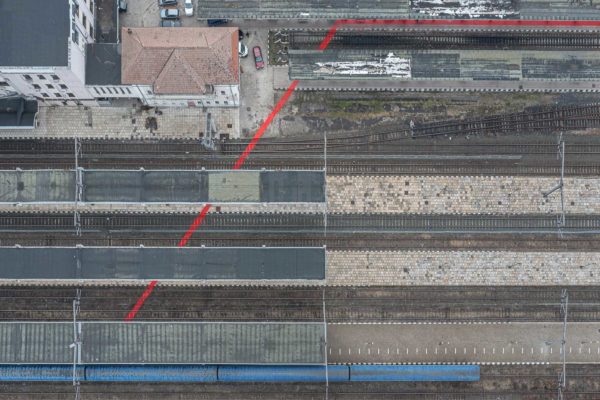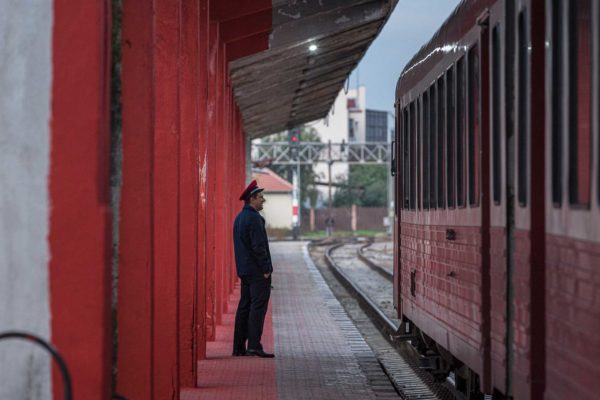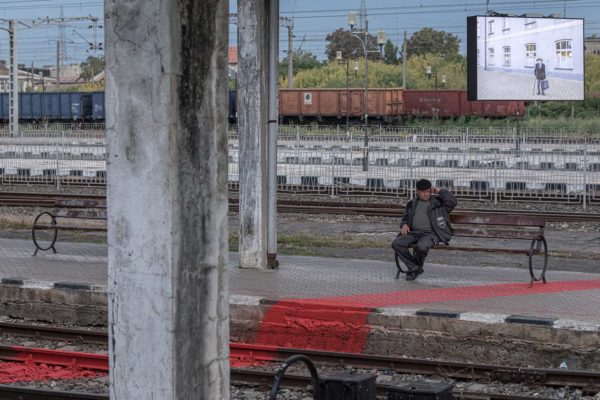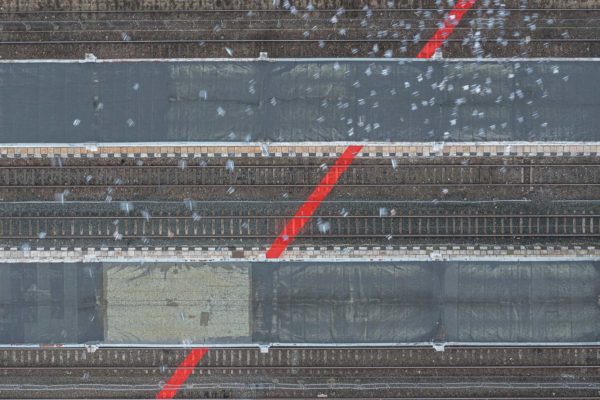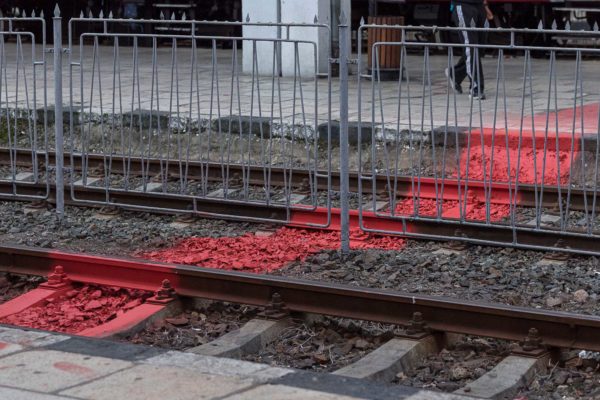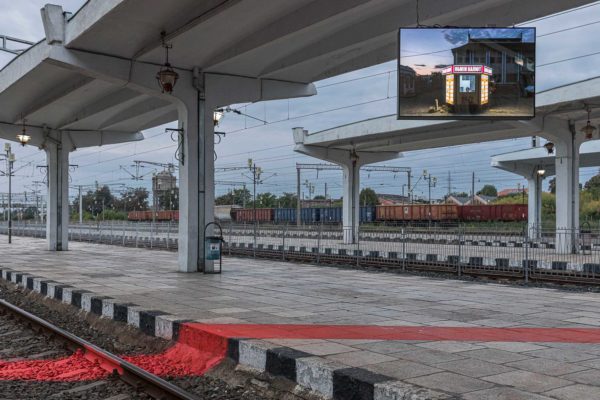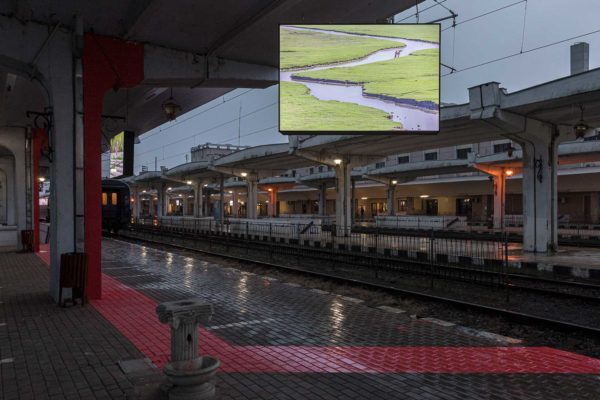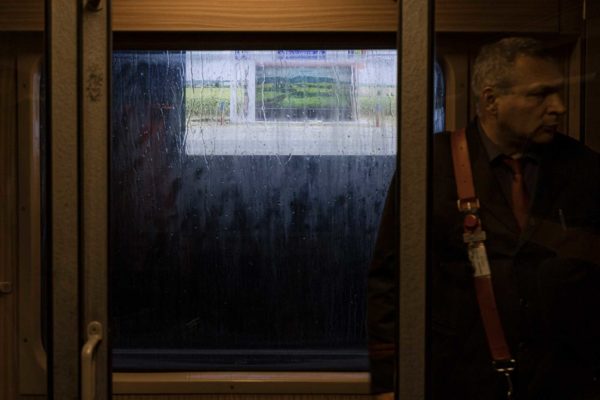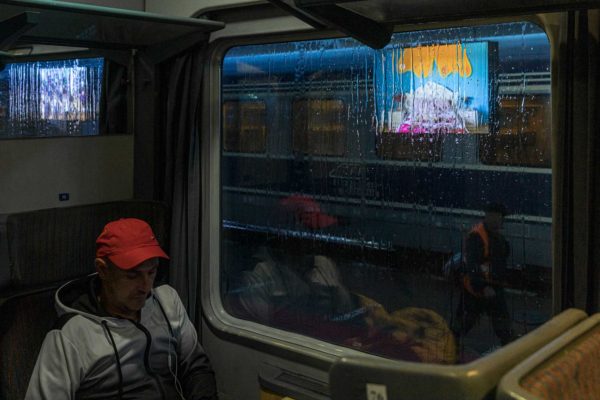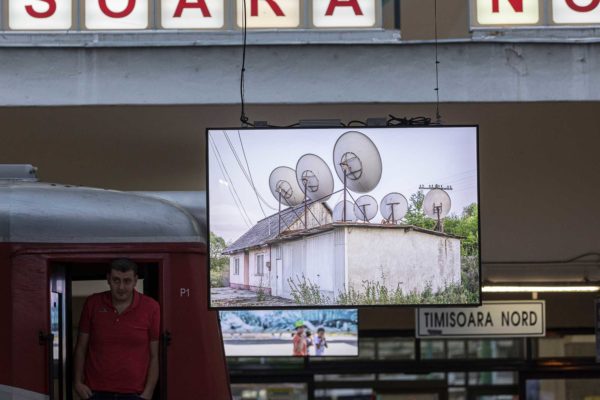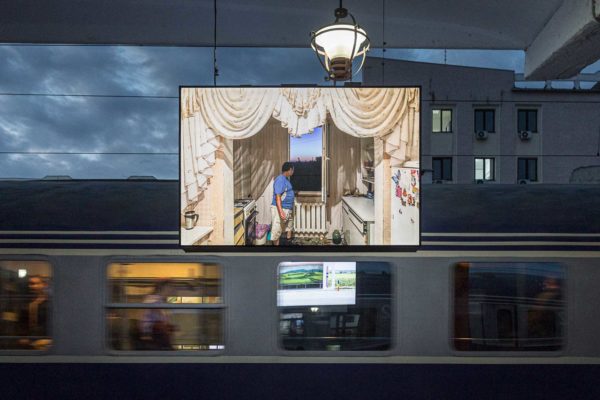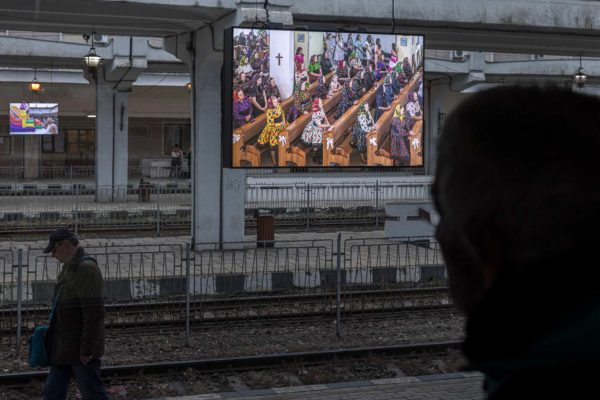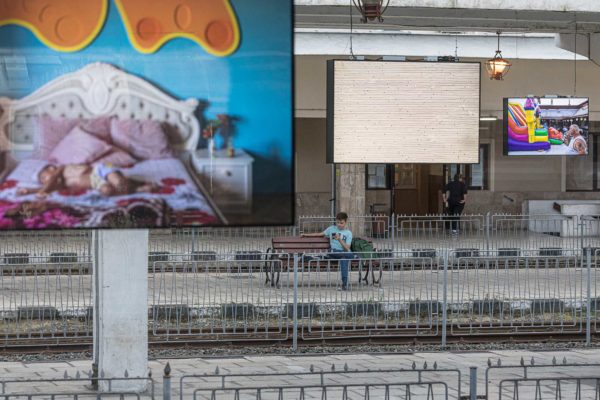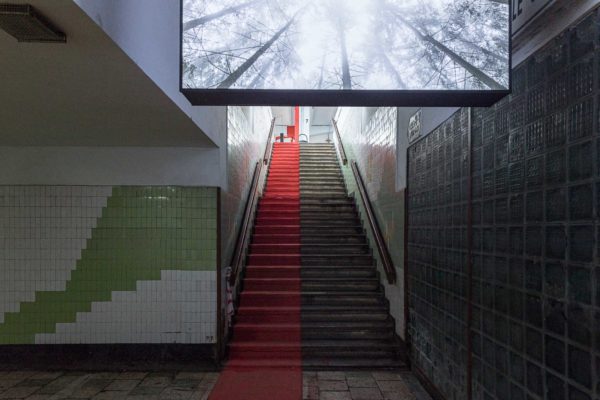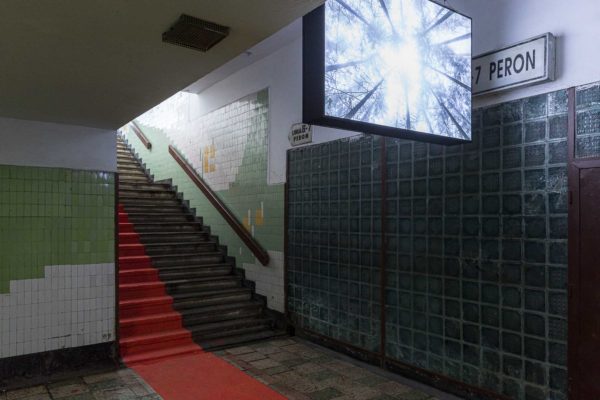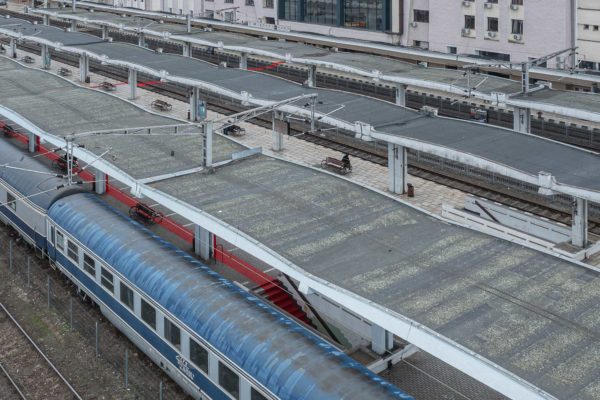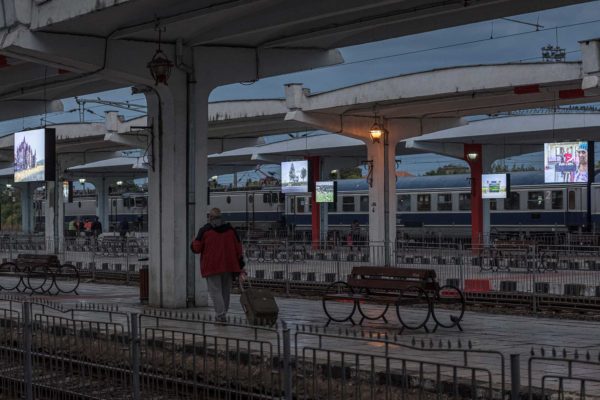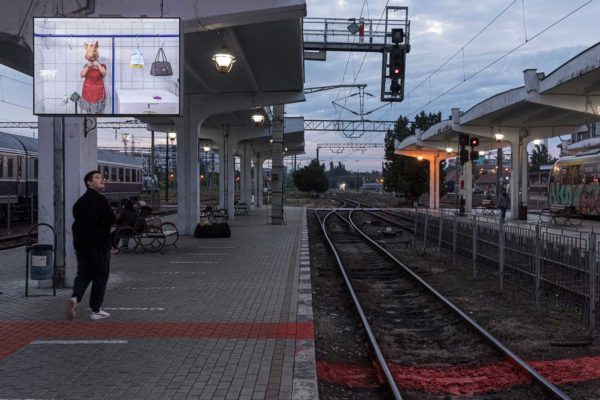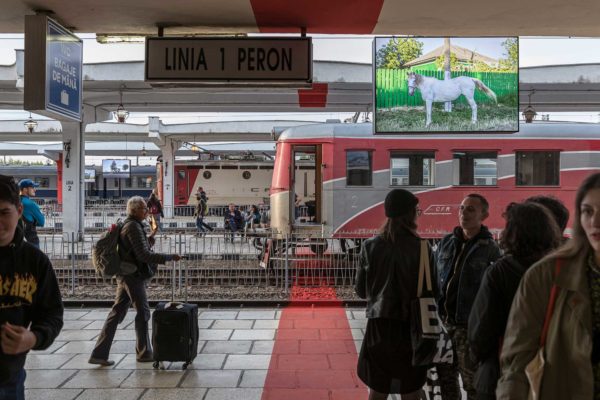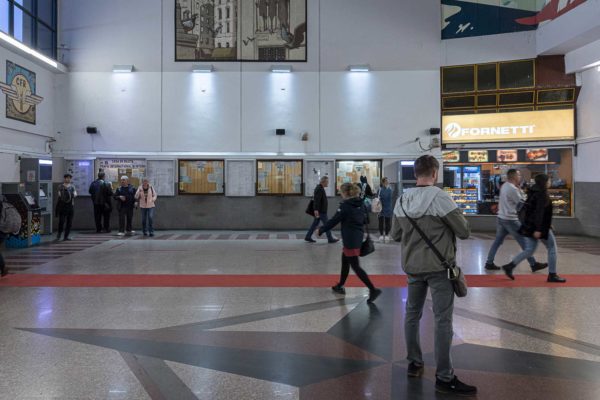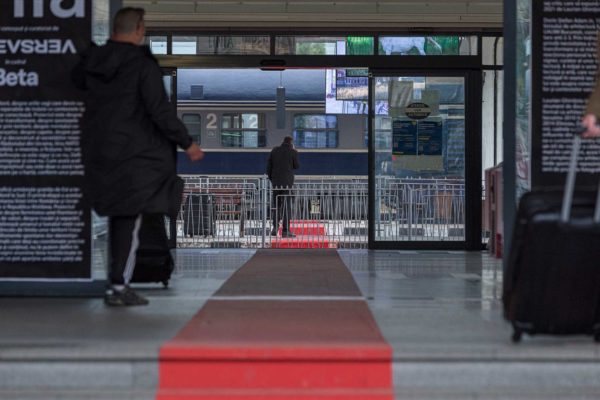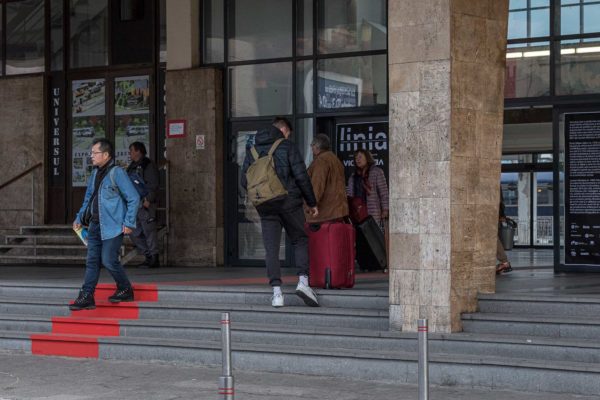24th September 2022 – April 2023 Photography installation at the Timișoara North Train Station
As part of
LINIA explores loosely defined territories, whose characters become distinguishable only when their limits become defined and readable. The project proposes traveling through spaces undergoing this type of transformation. It exposes fleeting moments within areas defined by their borders, it looks at the communities inhabiting these places, their collective memories, and social trajectories.
The line is:
A long, narrow mark made on a surface using ink, chalk, graphite, etc.
A one-dimensional geometric figure with no thickness, extending indefinitely in both directions
A real or abstract symbol that indicates a limit, a direction or links different points in space (e.g. on a map)

Europe’s borders

types of borders

LINIA is not a project that celebrates definitive shapes. It interrogates demarcation that either unites territories or separates them. These limits change over time and with them, the communities they influence. A line does not simply talk about its ends, the destination points; it also describes the space between them and reveals the similarities between neighbors while also underlining their diversity. Social, economic, and political threads intertwine to create this line. The border is a symbol of a closed space, inviolable and impenetrable, yet crossing it exposes undeniable parallels between those inside or outside it, communities whose connections could be amplified were it not for the line drawn between them.

before

after

The red line: is a recommended safety limit, the fastest, farthest, or highest point or degree considered safe
The red line, or “to cross the red line”: a phrase used worldwide to mean a figurative point of no return or line in the sand
1945
1988
2003
2022

1928
At a meeting regarding the Red Line Agreement, Calouste Gulbenkian drew a red line on a map of the Middle East demarcating the boundaries of the area where the clause would be in effect, mentioning that this was the boundary of the Ottoman Empire he knew in 1914.
1975
Israeli Foreign Minister Yigal Allon said that Washington “has managed to draw a red line which all the Arab countries know they must not cross […].”
1976
Israeli prime minister Yitzhak Rabin identified the Red Line as a guideline for gauging Syria’s overall military behavior in Lebanon in 1976.
1987
Ben Yagoda, a professor of English and journalism at the University of Delaware, has found uses dating back to 1987, with references to “red lines” in conflicts between Chad and Libya.
1994
US officials are using the phrase “red line” during the May 1994 negotiations over North Korea’s defueling of the nuclear reactor at Yongbyon.
1995
During a CSB – Face the Nation broadcast, US Secretary of State Warren Christopher is using the phrase “red line” referring to the NATO actions aimed to end the war in Bosnia.
1999
A New York Times article reported that Muslim clerics in Iran had set out a “red line for the revolution” that no one should cross.
2012
Barak Obama during the civil war in Syria: “We have been very clear to the Assad regime, that a red line for us is we start seeing a whole bunch of chemical weapons moving around or being utilized. That would change my calculus.
2012
At the 67th meeting of the UN General Assembly in New York City, Israeli Prime Minister Benjamin Netanyahu exhorted the UN to draw “a clear red line” to stop Iran from developing nuclear weapons.
2013
John McCain said that “Unfortunately, the red line […] was apparently written in disappearing ink.”
2021
30th November – President Vladimir Putin said that Russia would be forced to act if its “red lines” on Ukraine were crossed by NATO.
2022
24th March – British Prime Minister Boris Johnson said that “Putin has crossed a red line into barbarism with his invasion of Ukraine”

Romanian LAW No. 56 of June 4, 1992, regarding the state border:
Art. 62 – Persons moving or carrying out activities near the state border are prohibited from:
Paragraph f) – Photographing, filming, or executing painting works within the protection strip surrounding the state border, which could reproduce portions of the territory of neighboring states.
According to Law No. 56 of June 4, 1992, regarding the state border, taking photographs of the border is forbidden. Although the photographs taken do not show the border directly, only instances from everyday life in the vicinity of the border, the presence of a photographer was met with distrust, a suspicion amplified by the current context.
The authorities, represented by the military filters, border guards, police patrols, and also by people of all ages, priests, street vendors, peasants, farmers, or teachers, all either considered the documentation efforts as posing a danger or could not understand why such efforts are needed or useful.
The photographs were taken by traveling along the 3500 kilometers border over the course of 18 days, starting on the 146th day after the start of the war.
Up until the start of the war in Ukraine, the NATO border seemed like an invisible concept, a fabricated fiction. Once the crisis started, the border suddenly gained meaning, defining which territories are safe and which are not. It dictates who must consider emigration and who must not. What does that territory look like? Is it a wall? Is it fenced or is it just a buffer zone that creates separation on a map, following the shape of the natural landscape?
Photographic documentation follows the Eastern border of NATO territory from North to South. The first stage of this project is the recording of the line separating Romania from Ukraine, respectively Romania and the Republic of Moldova.
On the one hand, the project talks about the firmness of a border, a form of demarcation and separation, and the idea of belonging to a specific set of values. On the other hand, it celebrates everyday life, mundane and familiar, stretching beyond the limits imposed by military or political strategies.
Moments of spontaneity and small anomalies paint a picture that is overall familiar, even banal. Despite their precise coordinates, one cannot strictly define them as belonging to a specific time and space. They are anonymous images well rooted in our collective memory that could belong to either side of the border.

LINIA also talks about transportation routes that unite large-scale territories but become boundaries at a smaller level, almost invisible traces that impact the lands they cross. There was a time when East and West Romania were connected by a railroad track, a diagonal line crossing the country from border to border. The train running along this track was known as “the hunger train” for the long 17 hours it took to travel the 789 kilometers. This train barely stopped at the designated station, forcing travelers to board it by running. It did stop, however, for extended periods of time in the empty lands it traversed, as delays and technical difficulties were a common occurrence. In this case, the unidimensional character of the line expands to welcome the stories shared by travelers sitting face-to-face on opposing sides of the train compartment. This is a project about chance encounters and those compelled by circumstances.

the line
At the western end of the line crossing the country is Timișoara, a city defined by its diverse cultural scene with ethnically defined neighborhoods. This diversity across districts proves an acceptance of the concept of otherness. By joining the European Union, the citizens of Romania were moved toward recognizing the value of cooperating with those with different backgrounds. By participating in this cohesive community, the personal memory transforms into a collective memory, leading to dialogue, shared values, and similarities in gestures and appearances. Not long before, Romania was outside the border of NATO and EU, and it still sits in the waiting room for joining the Schengen agreement. Our national borders did not change since 1989, but by adhering to these larger communities and their shared economic and social values, the definition of the territories within these borders changed.
The train station in Timișoara defines another type of border, it limits the expansion of the city, but it also marks an entry point in the city. The exhibition compliments this ambivalence and uses the space of the train station to open the conversation about the shifting character of transitional spaces. Starting from the lines described by the railroad, it looks at the lines that draw territories together or break them apart.
The 40 photographs exhibited are displayed in light boxes measuring 1 x 1.5 meters, suspended above the passages of the station, both above and below ground level. The exhibition transforms the traveler, either coming or going, into a viewer and observer.
One of the exhibited photographs will continue its journey through the country. It will be placed in one of the trains that follow the lines drawn across the country as a continuation of the curatorial thought that underpins this project.

The line overlapped with North Train Station in Timișoara

The line overlapped with North Train Station in Timișoara
At the western end of the line crossing the country is Timișoara, a city defined by its diverse cultural scene with ethnically defined neighborhoods. This diversity across districts proves an acceptance of the concept of otherness. By joining the European Union, the citizens of Romania were moved toward recognizing the value of cooperating with those with different backgrounds. By participating in this cohesive community, the personal memory transforms into a collective memory, leading to dialogue, shared values, and similarities in gestures and appearances. Not long before, Romania was outside the border of NATO and EU, and it still sits in the waiting room for joining the Schengen agreement. Our national borders did not change since 1989, but by adhering to these larger communities and their shared economic and social values, the definition of the territories within these borders changed.
The train station in Timișoara defines another type of border, it limits the expansion of the city, but it also marks an entry point in the city. The exhibition compliments this ambivalence and uses the space of the train station to open the conversation about the shifting character of transitional spaces. Starting from the lines described by the railroad, it looks at the lines that draw territories together or break them apart.
The 40 photographs exhibited are displayed in light boxes measuring 1 x 1.5 meters, suspended above the passages of the station, both above and below ground level. The exhibition transforms the traveler, either coming or going, into a viewer and observer.
One of the exhibited photographs will continue its journey through the country. It will be placed in one of the trains that follow the lines drawn across the country as a continuation of the curatorial thought that underpins this project.
The exhibition in Timișoara is a pilot episode. The documentation is to be extended in 2023 across the entire whole East-West border of NATO, from Norway to Georgia. In 2024, the project will materialize into a book and an exhibition in Brussels, where the NATO Headquarters is located.
Co-organizers:
Co-financed by:
Sponsors:
With the support of:
Produced by:
Graphic Design :
Adrijan Karavdic
Digital Design & Development :
Cultural Design Berlin
Photography:
laurian ghinițoiu
Special thanks to:
Ioan Șoldănescu
Casian Ciurezu
Miruna Togoe
Ioana Popa
Vera Dumitru
Mirela Gherghi
Sergiu Tudoran
Alexandra Moise
Andrei Țărnea

48°10’25.89” N 25°20’24.192” E

48°6’30.588” N 26°12’43.068” E

48°15’5.388” N 26°33’54.816” E

46°11’51.24” N 28°1’27.966” E

45°54’18.942” N 28°11’33.516” E

47°8’44.466” N 27°49’50.268” E

47°12’32.352” N 27°47’46.08” E
